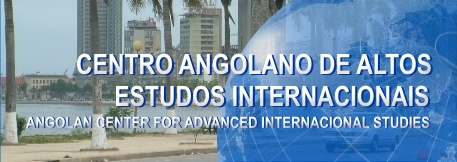![]()
|
|
 |
|
|
|
|
|
|
|
|
|
|
THE PROVINCE
OF ZAIRE In the capital city, M'Banza Kongo, 481 kilometres north of Luanda, there are ruins of the formerly glorious Congo Kingdom. The climate is tropical and humid, being drier along the coast. There are two c1early-defmed seasons: the rainy season between November and May and the dry season, between June and October. The average temperature is between 24 and 26°C. The lush vegetation oscillates between forest and savannah. The main agricultural product is manioc, but the agreeable climate also favours the farming of coffee, citrus fruits, sisal and other fruits. Traditional fishing methods are practised along the coast and at N'Zeto, there are a great number of salt flats. However, the oil industry provides this province with its greatest source of wealth. The province of Zaire used to be part of the Kongo Kingdom. This ancient empire, which was founded near the mounth of the river Congo, was prosperous and powerful, eventually covering a vast area of central Africa. The heartland of the Kongo Kingdom lay in and around M’Banza Kongo, the present day capital of the province. The royal court was based in the town, which was the center for trade and other political and economic activities. When the famous Portuguese explorer, Diogo Cão, first anchored at the point where the River Congo meets the Atlantic ocean in 1483, he founded a sophisticated and closely-knit society living in the area.The king of the Kongo, Nzinga Mbemba, entered a brief but friendly period of partnership with the Portuguese. Ambassadors were exchange with Lisbon, and in 1500, the king converted to Christianity. He was baptized King Affonso I. A strong trade relationship developed between the Bakongo and the Portuguese, with slaves as the main commodity. Bakongo warriors raided the southern Mbundu territory for slaves, selling them to the Portuguese, who shipped them to Europe, Brazil and the island of São Tomé. However, King Affonso I soon discovered that the insatiable Portuguese appetite for slaves was destrying his own kingdom. The Portuguese traders had started undermining his authority by dealing directly with coastal chiefs. They had also started carrying off anybody they could lay their handson, including members of the royal family. In 1526, he wrote a letter to Lisbon complaining about the “ corruption and licentiousness” of the Portuguese slave traders, saying they were “completely depopulation” his kingdom.
Despite King Affonso’s protestations, slaving remained the mainstay of the kingdom’s economy. When the slave trade collapsed at the end of the eighteenth century, the Kongo Kingdom foundered, and the area entered a long period of decline. When Portuguese colonized Angola, they overlooked Zaire province brcause it was so remote from the country’s major cities. At the time of Angola’s independence, the province had become one of the most neglected areas in the country. It did not, for example, have a single hospital. Development has remained slow in Zaire, despite the vast offshore oil reserves and the fertility of its soil. According to Ludy Kissassunda, investment is what is needed, “Not only are Zaire’s waters rich in oil, they are also rich in fish. We could grow tomatoes, we could grow beans and rice, we could even have poultry farms, but only with investment. We also need foreign investments to build hospitals and a polytechnic where we could train local people to become petroleum engineers. In that way, we could become less dependent on foreign expertise”. One of the most moving sights in Angola is the point where the River Congo meets the sea. The roaring waters of the river thunder into the Atlantic Ocean. A truly memorable experience is to take a boat or helicopter trip to this point and relive the moment when in 1887 the British explorer, Sir Henry Morton Stanley, started his historical trip into very heart of Africa. Impenetrable dramatic and full of promise much like modern Zaire. A big tree stands in the centre of M’Banza Kongo, the provincial capital of Zaire. According to local legend, when a person sits in the shade of this tree, it starts to bleed in honor of the visitor. Some foreign visitors to M’Banza Kongo have spent the whole day sitting under the tree, waiting for it to bleed, as locals pass by with wry smiles on their faces.
The Arvore do Sangue or “bleeding tree” may not live up to expectations,
but another plant, the simple sunflower, has come to represent great
productivity and promise in this northern province.
For Girassol or “Sunflower” is the name of a huge oil
field discovered in Block 17 off the coast of Zaire in 1998, along with several other large deepwater deposits. Girassol is one of the largest oil fields in the world. |
However, unlike Angola’s other internationally well-known oil province, Cabinda, in which the American oil company, ChevronTexaco, holds a virtual monopoly, Zaire hosts a number of companies including
Exxon Mobil, BP Amoco and TotalFinaElf. All are based in the coastal town of Soyo.
|
|
|